5 Things We Know About Dark Matter (And 5 We Don’t)
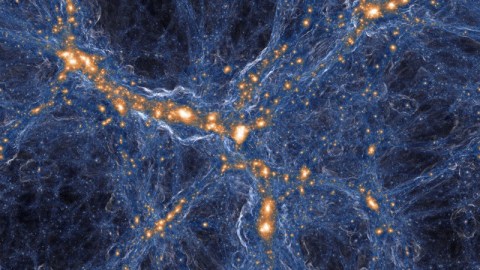
Dark matter is perhaps the most mysterious substance in the Universe. What exactly it is, however, still eludes us.
Dark matter is one of the most mysterious and yet most ubiquitous substances in the Universe. While things like human beings, the Earth, the Sun, and everything that emits or absorbs light in space are all made out of normal matter — including particles like protons, neutrons, and electrons — that only accounts for one-sixth of all the mass in the Universe. The remaining five-sixths, the overwhelming majority, is dark matter.
We can tell that dark matter exists and even infer some of its properties by observing how it affects the matter and light we can observe, particularly in large-scale astrophysical environments. But the fact that dark matter has eluded direct, laboratory detection thus far means that a number of its properties remain open questions. Here are five things we know about dark matter, along with five that we don’t, as we probe the limits of our scientific frontiers.
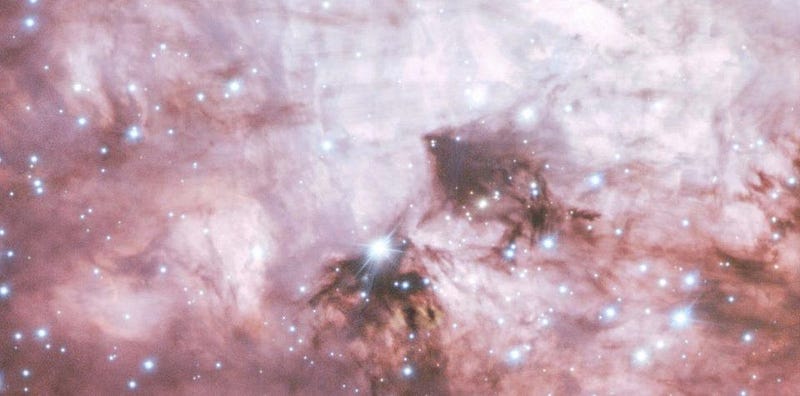
1.) Dark matter is not simply normal matter that we cannot detect. This is something that’s completely known. Dark matter cannot be:
- failed stars,
- clouds of gas,
- dust grains,
- asteroids or comets,
- basketball-sized clumps of normal matter,
- an ionized plasma,
- black holes,
or anything else made originally from normal matter. We have a suite of evidence that rules out that possibility.
Based on the earliest, most pristine clouds of gas we’ve ever detected, we can measure how much hydrogen, deuterium, helium-3, helium-4, and lithium-7 the Universe was born with shortly after the Big Bang. These measurements determine exactly how much normal matter the Universe was born with, and that value is only one-sixth the needed amount of total mass. The remaining five-sixths, therefore, must be something else entirely: dark matter.
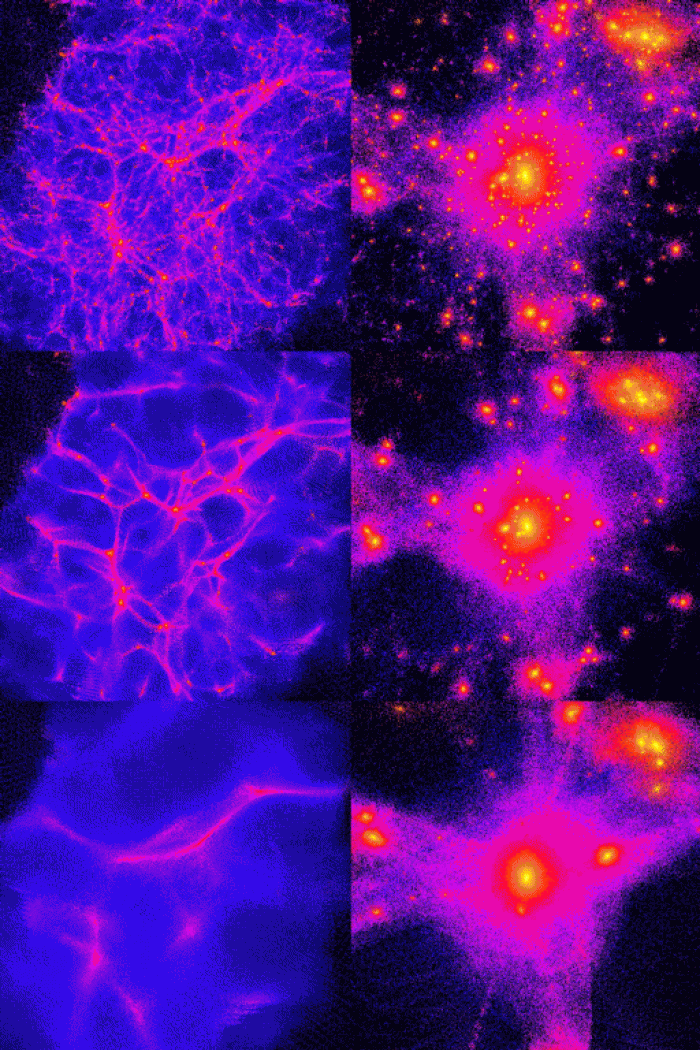
2.) Dark matter must be cold in nature. In theory, whatever (hitherto undiscovered) particle is responsible for dark matter could have any mass at all, and could have been created moving quickly or slowly or not at all, relative to the speed of light. But if dark matter moved quickly, its properties would suppress the formation of structure on small scales, leading to different structures than what we can observe.
In particular, we have three lines of observational evidence that constrain the temperature of dark matter: the gravitational lensing of quadruply-lensed quasars, absorption features along the line-of-sight to distant objects, and tidal streams in the Milky Way’s vicinity. All three of these teach us the same thing: dark matter must either be quite heavy or must have been born slow-moving. In other words, dark matter must have been “cold” even in the very early stages of the Universe, as opposed to hot or warm.

3.) Dark matter must not interact very much with itself, with light, or with normal matter. There’s no doubt that if dark matter exists, there must have been a pathway for its creation in the young Universe. However, whatever that pathway was, those interactions are no longer occurring and haven’t occurred with great abundances in a very long time.
Direct detection experiments haven’t revealed dark matter, constraining its possible mass and cross-section. It doesn’t absorb or blur distant starlight, restricting its interactions with light. It doesn’t annihilate with itself above a certain threshold, otherwise a large and diffuse gamma-ray signal would be seen at the centers of galaxies. In fact, it’s 100% consistent with not interacting at all via any of these mechanisms. If we hope to detect it directly, we’ll have to push these limits even further, and even then, there’s no guarantee of a positive signal. Dark matter might not interact at all in these fashions.
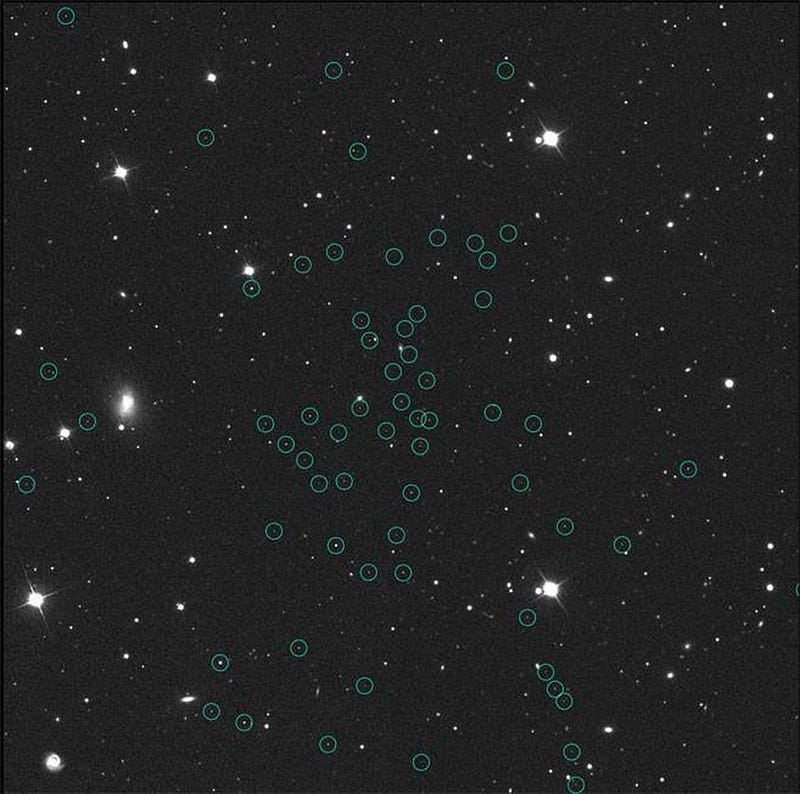
4.) Dark matter’s effects are most dominant, on average, in the smallest galaxies of all. This one’s a little bit counterintuitive, but has been observationally validated practically everywhere we look. Under the laws of gravitation, all forms of matter are treated equally. But the other forces, like nuclear and electromagnetic forces, only affect normal matter. When a large burst of star formation takes place in a galaxy, all of that radiation simply passes through the dark matter, but it can collide with and be absorbed by the normal matter.
This means that if your galaxy is low enough in mass overall, that normal matter can be expelled by intense episodes of star formation. The smaller and lower-in-mass your galaxy is, the greater the amount of normal matter that will be expelled, while all the dark matter will remain. In the most striking examples of all, dwarf galaxies Segue 1 and Segue 3, both satellites of the Milky Way, contain only a few hundred stars, but some 600,000 solar masses of material overall. The dark matter-to-normal matter ratio is approximately 1000-to-1, as opposed to 5-to-1 in most large-scale structures.
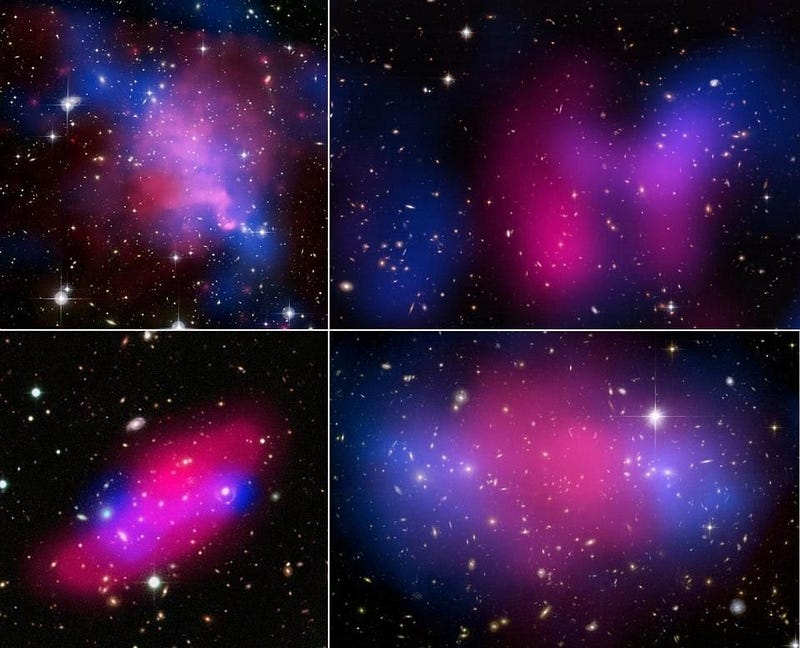
5.) Dark matter causes gravitational effects in places where normal matter isn’t located. This is some of the strongest evidence of all that dark matter cannot simply be normal matter that’s dark. When two galaxy groups or clusters collide, the intergalactic gas and plasma collides and heats up, emitting X-rays (shown in pink). This represents the overwhelming majority of the normal matter, far more than what’s found in stars and the individual galaxies themselves.
But the signal from the mass, inferred from gravitational lensing, illustrates that the majority of the mass is located where the blue contours are shown. This can only be true, given the wide variety of colliding clusters where this has been demonstrated, if some new form of mass obeys different collisional laws than normal matter does. The inescapable conclusion is that some new form of matter — dark matter — must make up the majority of the Universe’s mass.
However, just because there are things we know about dark matter doesn’t mean that we know it all. In fact, here are five major things we don’t know about it.

1.) We don’t know what particles are responsible for dark matter, or if it’s even a particle at all. We know that dark matter exists, that it doesn’t interact significantly with itself, normal matter, or radiation, and that it’s cold. But we don’t know what properties it actually has. Dark matter could be:
- a large number of low-mass particles that were born cold, like an axion,
- a smaller number of heavier-mass particles (WIMPs) that were born hot in the early Universe, like a neutralino,
- an even smaller number of ultra-massive particles that arose from gravitational interactions (WIMPzillas),
- a GUT-scale particle that arose from physics we have yet to fully understand (like a heavy right-handed neutrino),
- or even a non-particle-like fluid that permeates the Universe and gravitates.
But all of our efforts to directly detect a candidate particle or field for dark matter have come up empty. We see its astrophysical effects indirectly, and that’s indisputable, but on particle-sized scales, we have no idea what’s going on.
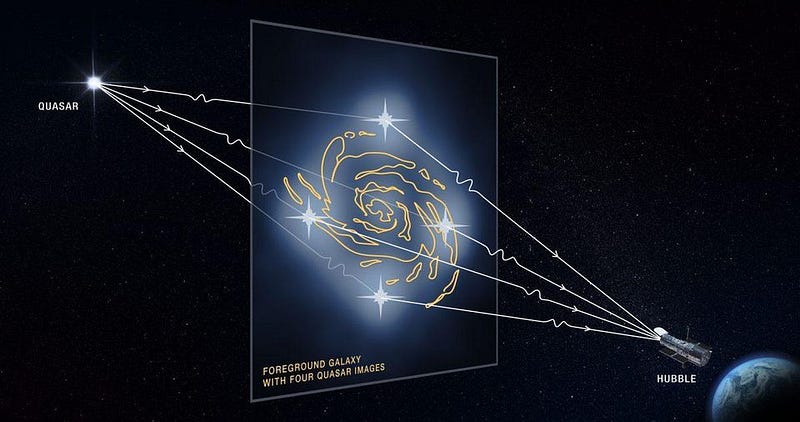
2.) We don’t know whether the “dark sector” is simple or rich. Is dark matter, assuming it’s made of particles, all made of the same type of particle? Whether it’s all the same component or not, do dark matter particles bind together and form larger, richer structures than merely detached particles? Are there dark atoms, dark molecules, or even larger structures made purely of dark matter out there?
We know that dark matter doesn’t collide inelastically with itself and lose substantial amounts of angular momentum, but we’ve only ever probed dark matter structure down to scales of a few thousand light-years. On scales smaller than that? It’s eminently possible that there’s an entire dark Universe out there — maybe even including some sort of dark “periodic table” — made of multiple different types of dark particles that interact with one another. The only restriction is that they do so at a threshold that falls below what we’ve already placed constraints on.
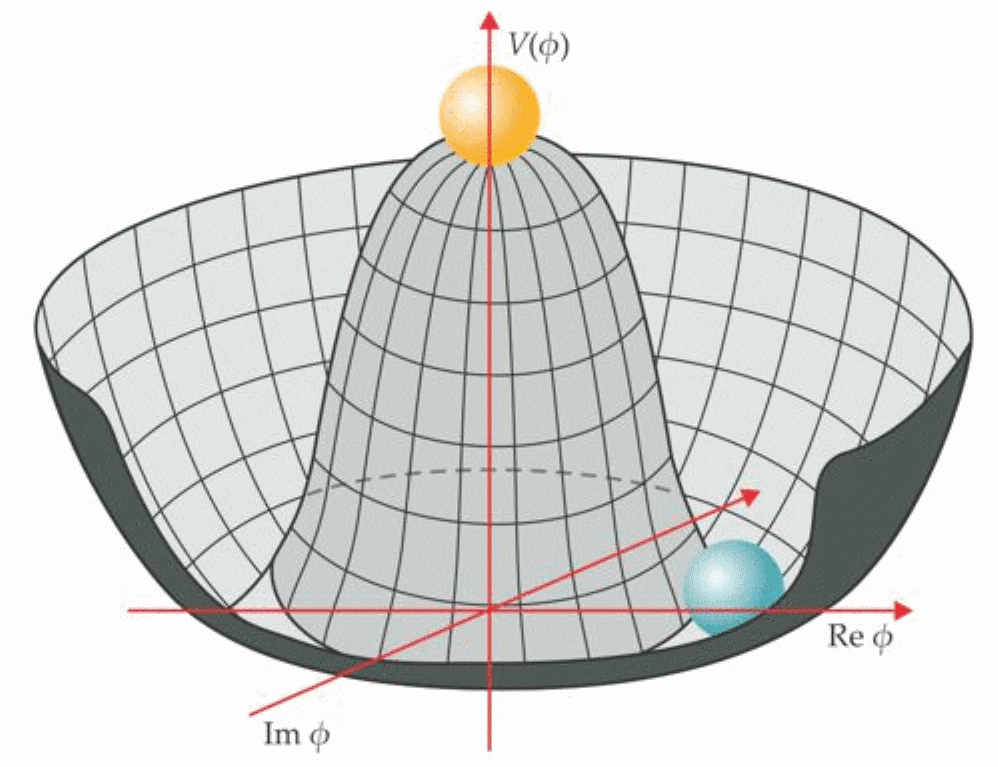
3.) Did dark matter always exist in the Universe, or was it created at some later time? This is one of the deepest questions we know how to ask, and we do not know the answer. It’s possible that dark matter is what’s known as a thermal relic, where:
- in the early stages of the hot Big Bang, all sorts of particles and antiparticles were created,
- as the Universe cools, the unstable ones decay and annihilate away,
- but if one of them (hitherto undiscovered) is stable, either along the decay chain or enough of them survive annihilation, that could become dark matter.
That’s dark matter that always existed, as it was created as soon as the hot Big Bang began. But there’s another way, emphasized by the above diagram:
- the Universe cools, and the orange ball rolls down into the valley below where it becomes the cyan ball,
- that ball has a degree of freedom, where it can roll around the bottom and occupy all points with equal likelihood,
- until something comes along to tilt the entire potential, which gives it a preferred direction after all.
This latter scenario corresponds to an axion-like scenario, where these particles both obtain a small but non-zero rest mass and get ripped out of the quantum vacuum in large numbers. Dark matter may not have always existed, but may have been created later on: before stars formed and before the CMB was emitted, but after the early stages of the hot Big Bang.
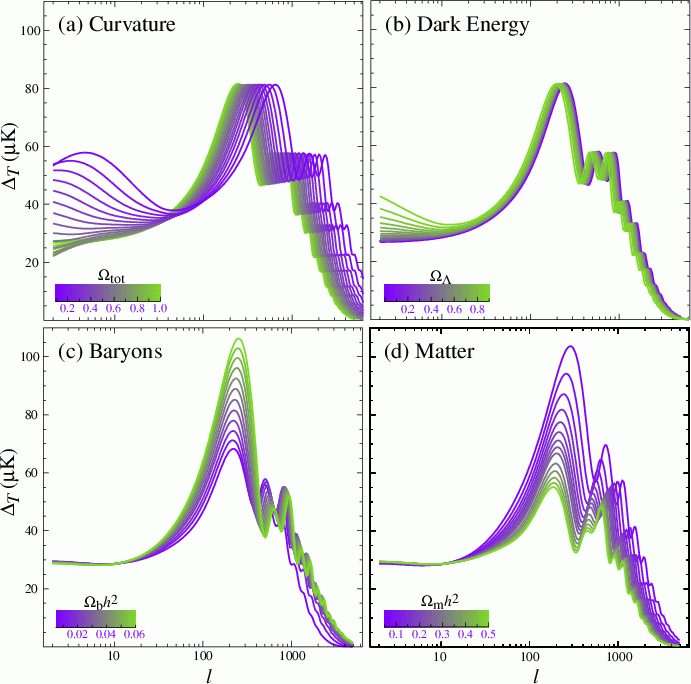
4.) Is dark matter eternally stable, or will it all someday decay away? This is another situation where all we have are constraints. From the peaks-and-valleys in the cosmic microwave background’s fluctuations, we know that dark matter must have existed in a 5-to-1 ratio with normal matter back when the Universe was just a few thousand years old. From observations of large-scale structure and the centers of galaxies, we know that the dark matter-to-normal matter ratio hasn’t changed by any measurable amount over the past 13.8 billion years.
But dark matter could decay on timescales longer than the age of the Universe, and we’d have no way of knowing just yet. A lifetime of a few hundred billion years or longer is still on the table, meaning that it’s possible that in the very far future, maybe even while the stars are still burning, dark matter will decay away into normal matter, antimatter, and/or radiation, after all. Until we know what its properties are, this will remain a mystery.

5.) Will any of our direct detection experiments ever find it, or is this a fruitless endeavor? Perhaps we’re on the cusp of finding an experimental clue as to what dark matter really is. But perhaps not; perhaps all we’re going to do is place constraints on the things we know how to measure, like event rates, scattering cross-sections, and potential particle properties and couplings. We have no way of knowing if the experiments we’re performing right now are even capable of revealing dark matter’s nature, irrespective of what it is.
It’s possible we’ll get an announcement of a candidate dark matter particle at any point from a variety of experiments, but it’s also possible that the ways in which we’re presently looking for dark matter will never bear fruit. Nevertheless, we not only know that dark matter exists from the astrophysical evidence, but we’ve definitively uncovered a large amount of information about what it is, how it behaves, and what it cannot be. In the quest to understand our Universe, one thing stands out above all others: we must be intellectually scrupulous and honest about what we know, what we don’t, and what remains uncertain.
Ethan Siegel is the author of Beyond the Galaxy and Treknology. You can pre-order his third book, currently in development: the Encyclopaedia Cosmologica.





